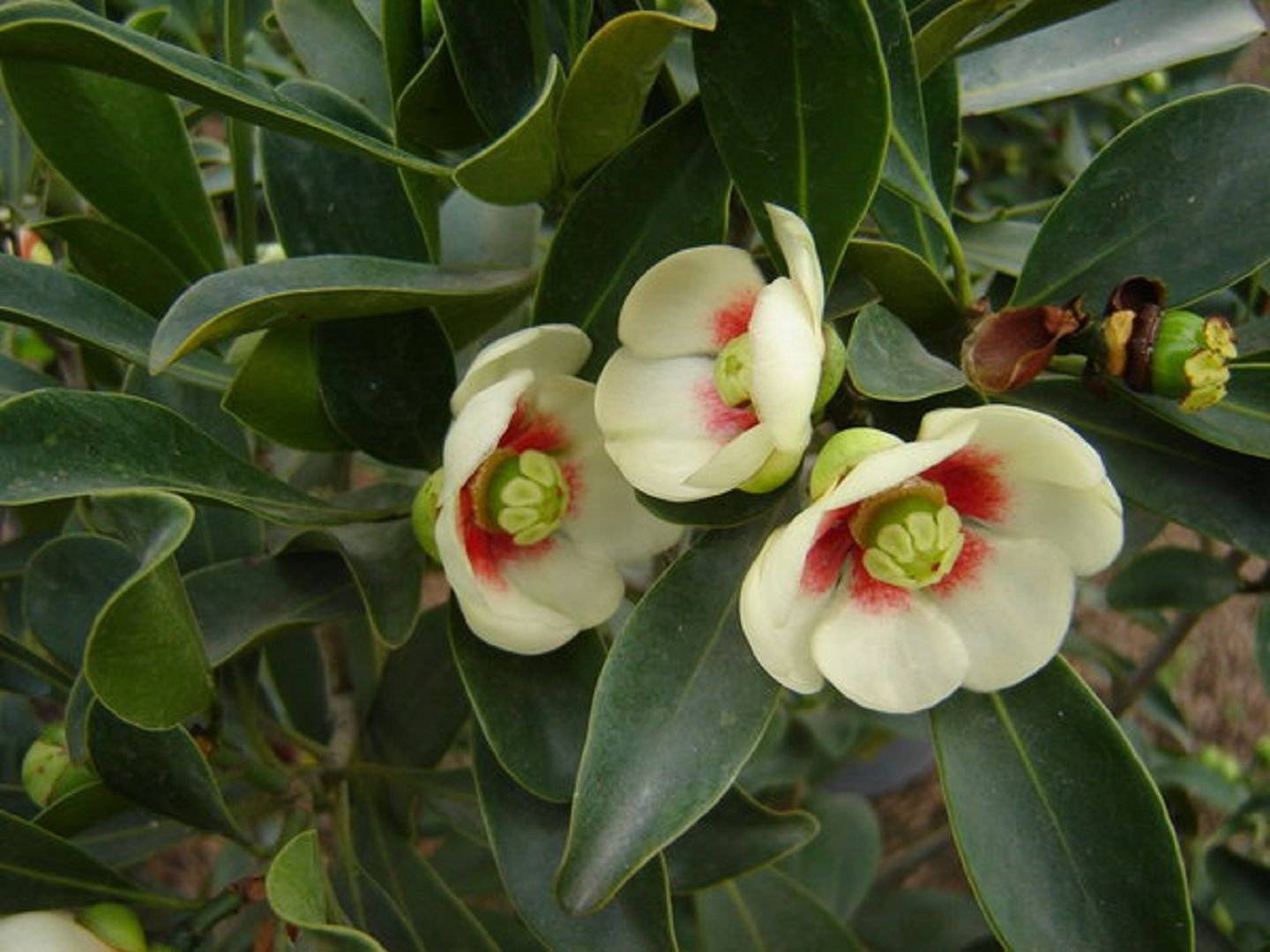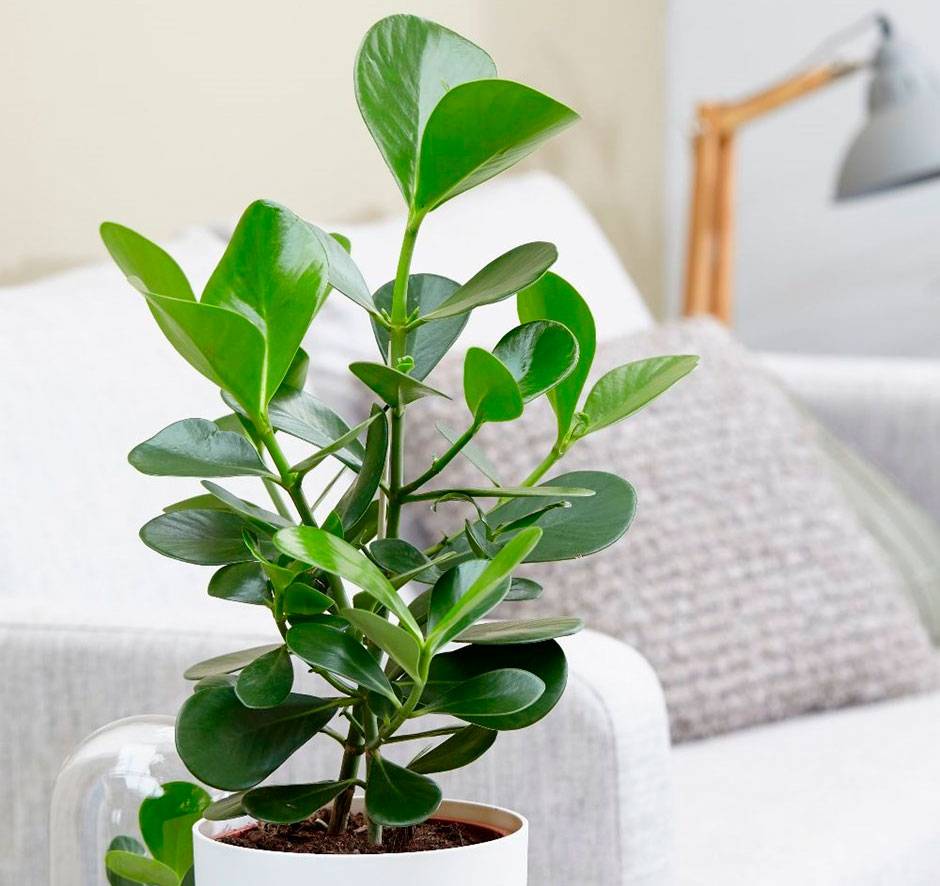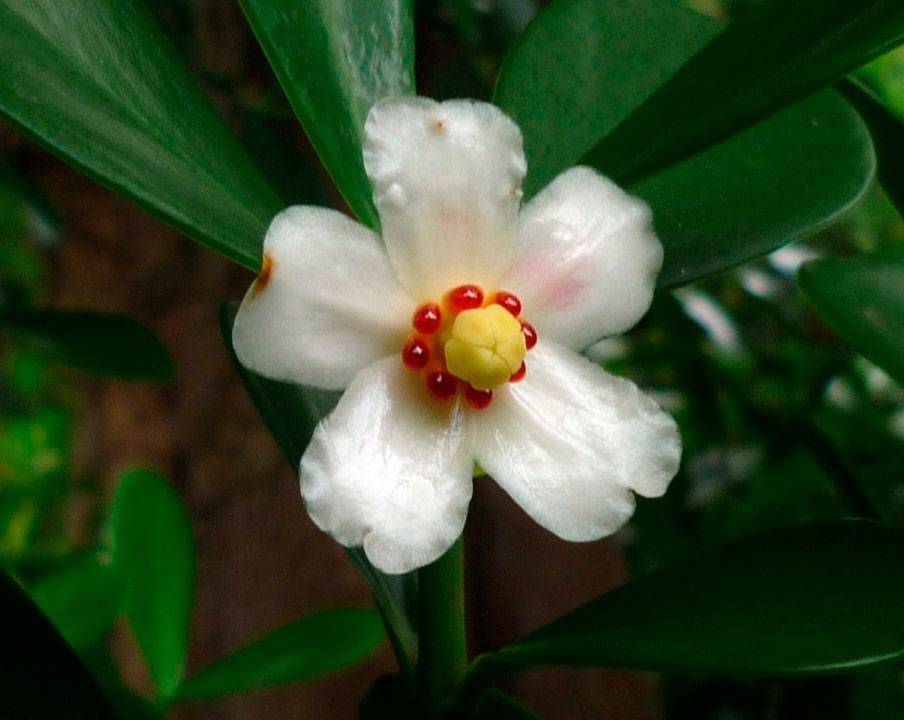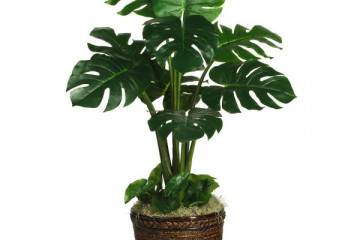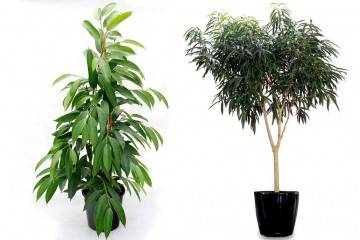Clusia flower - home care
Content:
Many indoor plant lovers prefer evergreen shrubs or trees. Although they do not bloom or do it quite rarely, they decorate the house all year round with their appearance. Currently, the clusion is gaining more and more popularity, caring for which at home is quite simple and does not require much effort and time.
What a clusion looks like
Clusia is an evergreen shrub native to the tropical and subtropical regions of the Americas.
Description of the plant:
- comes in the form of a tree or a bush. In nature, it is often found on other plants, which is capable of ruining with its volume;
- stems are distinguished by a large number of branches and leaves;
- leaves are green, they are covered with thick skin and smooth. Located on the branches opposite each other. They have the shape of a lancet or ellipse with smooth edges and sharp ends. Depending on the type of flower, the leaves grow up to 20 cm in length and 8 cm in width. They keep scratches and damage on their surface for a long time;
- the roots grow rapidly and occupy the entire area of the pot. One root system is capable of giving life to several shoots at the same time;
- flowering occurs at night all year round, during the day the flowers close. The petals are white, the center is pink or yellow. The flower smell is light;
- after flowering on the clusion, fruits remain in the form of boxes with seeds. After full maturation, the capsule opens, it becomes like an asterisk.
Common varieties
Breeders are constantly breeding new varieties of the clusion. Each plant is characterized by certain features and properties by which they differ:
- Clusia pink (Rosea Princess). The most popular and commonly grown variety. Differs in beautiful flowers, the petals of which are pink in the center and white at the edges. The middle of the Rosea Princess is completely yellow;
- clusion lanceolate. The name was given for the appearance of the leaves, which are very similar to lancets. The flowers are white at the edges, which gradually turns into red closer to the center;
- the clusion is large. The second name of the plant is balsamic apple. The flower can grow up to 3 m in height, while having a crown diameter of 1.2 m. The petals are white, gradually turning into pink towards the center;
- Clusia large-flowered (Grandiflora). It is a climbing plant with rather large flowers, they can reach a diameter of 20 cm. Very similar to funnels, they have a pinkish tint.
Features of home care
Caring for a clusion at home does not require much effort. Even a novice florist can cope with the plant. There are several rules to follow.
Temperature
During the growing season, the culture is provided with a temperature of 22 ° C to 25 ° C. At the onset of a dormant period, the indicator is reduced to 20 ° C. Periodic ventilation is recommended.However, it is worth remembering that the flower does not like drafts.
Lighting
A rather long daylight hours (up to 12 hours) are favorable for the plant. However, the light must be diffused. Direct sunlight is unacceptable, as is lack of sun. In both cases, the plant will develop poorly, and in the first case, the appearance of sunburns is possible. Provide additional lighting if necessary
Watering
Clusia does not like high humidity. The plant is watered sparingly and infrequently, after the soil is almost half dry. Water should not stagnate in the pot, otherwise rotting of the root system is possible.
For irrigation, warm, well-settled water is used.
Spraying
Spraying a flower can be carried out in warm dry weather or in winter, when the air in the room is dry and warm. It is not recommended to get carried away with the process; excess moisture is removed from the leaves with a soft cloth.
Humidity
The air humidity should not be lower than 75% so that the conditions in the room are as close to natural ones as possible. You can periodically arrange a warm shower for the flower, after covering the soil in the pot with plastic.
Priming
The bush loves nutritious and loose soil that allows moisture and air to pass through well. The acidity of the soil should be closer to neutral. Ready-made primer can be purchased at specialized stores. Sand is added to it to increase looseness and used for planting.
Top dressing
Fertilizers are applied from April to October. The clusion is fed twice a month with complex agents with a weaker dosage than described in the instructions. If in winter the conditions for placing the plant are the same as in summer, then it is allowed to fertilize the flower once a month.
Features of winter care during the rest period
The dormant period at the clusia lasts from late autumn to spring. At this time, the amount of watering is reduced, and fertilization is stopped. The flower is provided with a lower room temperature.
When and how it blooms
In natural conditions, the plant can bloom all year round. At home, the culture produces flowers mainly in the spring, when the dormant period ends. Clusia is gaining strength and begins to grow, releases new leaves and buds.
Pruning
The plant is pruned to form a beautiful crown. The tops are pinched periodically, which stimulates the growth of lateral shoots. Dry leaves and shoots are removed. For formation, only young shoots are cut. Removing the old ones will give the plant an unaesthetic look.
How the clusion reproduces
If desired, the flower can be propagated. There are several methods of this procedure, but in most cases they are vegetative.
Cuttings
Propagation by cuttings is a fairly simple process that does not take much time:
- From a healthy plant, the tops of the shoots are cut with a sharp knife.
- They are treated with stimulating drugs for the formation of roots.
- Placed in a container filled with a mixture of peat and sand.
- The pot is covered with foil on top and left at a temperature of 25 ° C.
Rooting takes place within a month. After the roots reach 1.5 cm, the plants can be transplanted to a permanent place.
Air layering
Clusia variegated or any other often has aerial roots. You can also propagate a flower with such processes:
- When the aerial-rooted shoots are dense, they can be separated from the plant with a sharp knife.
- Layers can be immediately placed in a container with soil.
- The pot is set in partial shade and the condition of the flower is monitored.
After some time, the plants take root, they can be rearranged to a brighter place and looked after like an adult flower.
Transfer
Clusia the Pink Princess (like other species) does not like transplantation and does not tolerate this procedure well. Therefore, it is carried out only as a last resort. Step-by-step process:
- Prepare a suitable container.
- Drainage is poured at the bottom, it should occupy a fourth of the pot.
- The bush is transplanted by the transshipment method together with a lump of earth.
- The procedure is carried out very carefully so as not to damage the root system.
- The voids are filled with fresh earth.
- At the end of the transplant, the flower is well watered.
Diseases and pests
Clusia Rosea Princess is an amazing plant that is quite resistant to various types of diseases. All diseases in a flower result from non-observance of the rules for caring for it. With a lack of light, the leaves turn yellow and dry. Decay of the roots and the entire plant occurs as a result of improper watering.
The development of fungal diseases is not excluded. Special fungicidal preparations will help to cope with it.
The clusia flower is also not immune to insect attacks. The plant can be affected by mealybugs, scale insects and spider mites. Such parasites can very quickly provoke the death of a plant. When signs of damage to a flower by pests appear, the rhinestone needs to be treated with special products that can be purchased at a flower shop.
Clusia is a beautiful tree that will delight not only with its constantly green leaves, but also with beautiful flowers. Caring for it is simple, even a beginner can handle it. The main thing is to follow the rules described above.

